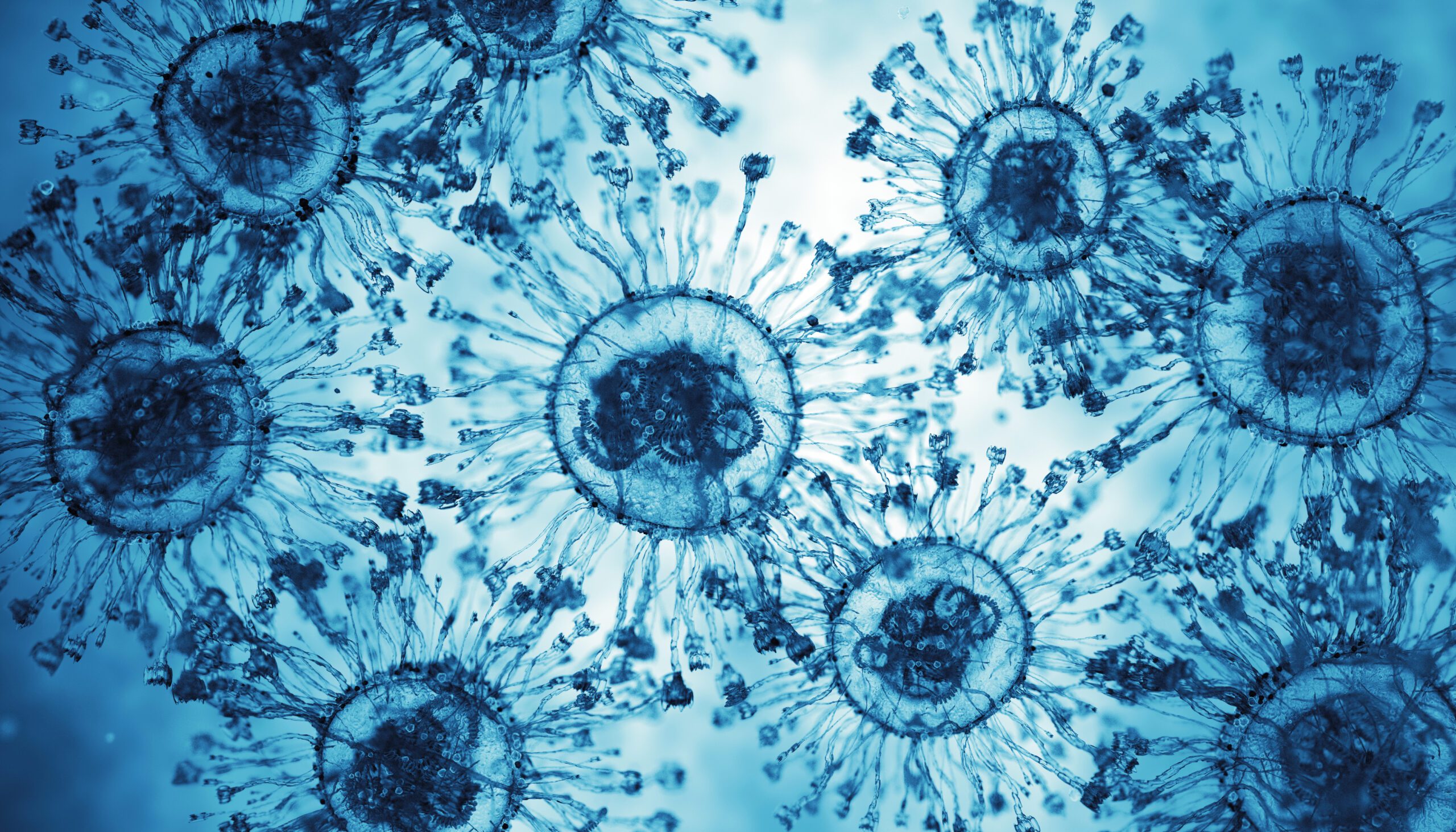Dr. Mike Ren also contributed to this post.
If you’re anything like me, thumbing through the microbiology section of First Aid makes your stomach churn just a little. That chapter—yes, the one titled “High-Yield Principles in Microbiology”—is over 80 pages long. And guess what? That is supposed to be the condensed version.
So what’s a med student to do?
Enter this guide: a truly high-yield primer on microbiology, stripped down to what matters most for the USMLE and your clinical brain. We’re not trying to memorize every factoid in one go. Think of this as your first pass, where you build your mental scaffolding. As you review more, you’ll layer in details and refine your understanding.
High-Yield Microbiology Topics for USMLE Step 1: Bacteria & Viruses
This post is just a start. In your approach to gargantuan chapters like this, do what you can to scratch one level deeper with each pass through the material.
First time through, build the framework.
Next time, put some more facts into the framework.
Microbiology has so many little facts that it will necessitate multiple passes over time. Those singular facts are also easier to internalize with spaced repetition (flashcards!) like Memorang. The fact that Enterococcus grows in 6.5% NaCl media, or that Strep bovis is related to colon cancer will not get you too far. This primer will help you go after the low-hanging fruit of the material to give you a strong knowledge base.
Bacterial taxonomy (9)
Goal: Be able to sort bugs by Gram stain, shape, and oxygen requirement.
Mnemonic for Gram-positives: Corny Actors Knock Back Listerine in the Closet =
Corynebacterium, Actinomyces, Nocardia, Bacillus, Listeria, Clostridium. Don’t forget Staph and Strep—they’re in a league of their own.
Encapsulated bacteria: Must-know for anyone working with splenectomy patients.
SHiN: Strep pneumo, H. influenzae, Neisseria
These bugs rely on opsonization, and without a spleen, patients are more vulnerable.
Endotoxin (6)
More important than the knowledge of endotoxin structure itself is the gestalt of all the terrible things that can happen when your patient is bacteremic (i.e., endotoxin-laden bloodstream).
Gram-negative bacteria have lipopolysaccharide (LPS) on their outer membranes. The immune system freaks out when exposed to this.
The result? A cytokine storm: IL-1, IL-6, TNF-α → fever, septic shock, DIC, and full-blown sepsis – bad news for the patient.
Clinical Pearl: think “cytokine cascade” in cases of bacteremia. On boards and in real life, shock + fever + low BP = Gram-negative sepsis until proven otherwise.
Staph & Strep (8)
The most classic of gram positive bacteria, these two are incredibly clinically relevant, and we are literally covered in them!
Of the staphylococci, S. aureus is undoubtedly most important. It cause skin infections, acute endocarditis, toxic shock syndrome, food poisoning (rapid onset from preformed exotoxin), and MRSA.
Get used to blood cultures coming back as “gram positive cocci in clusters.” That’s staph, from the greek staphule, meaning grape.
Staphylococcus aureus
The king of gram-positive cocci. Think:
- Skin infections
- Acute endocarditis
- Toxic shock syndrome (TSS)
- Preformed enterotoxin → rapid food poisoning
- MRSA: methicillin-resistant strains are hospital nightmares.
Buzzword: “Gram-positive cocci in clusters” = Staph (Greek staphyle, “grape”)
Knowledge of Streptococci is also super high-yield. Strep pyogenes lives up to its name and causes pyogenic (pus-forming) infections. The most common are pharyngitis (“Strep throat”), cellulitis, and impetigo. These can lead to downstream glomerulonephritis (PSGN) and rheumatic fever.
Other pathologies to relate to pyogenes are scarlet fever and necrotizing fasciitis. All that from a single species. The other major Strep, Strep agalactiae, has clinical relevance for parturients, and can cause neonatal meningitis and sepsis, as the defenseless fetus passes through the birth canal.
Streptococcus pyogenes (Group A)
Can cause in patients:
- Pharyngitis
- Cellulitis
- Impetigo
- Scarlet fever
- Rheumatic fever
- PSGN
- Necrotizing fasciitis (!)
Streptococcus agalactiae (Group B)
Most relevant in OB: causes neonatal meningitis and sepsis during birth.
Clinical Pearl: Screen for Group B Strep at 35–37 weeks gestation. Treat with intrapartum penicillin to prevent neonatal sepsis.
Clostridium (7)
Collectively, the clostridium (from the Greek kloster, for spindle), cause a number of virulent diseases. They are all toxin related. The pathophysiology of both tetanus and botulism are worth knowing because of their cell biology roots. C. perfringens can cause gas gangrene, and one of the greatest nosocomial villains, C. diff causes…you guessed it…C. Diff Colitis.
To recap, clostridium are anaerobic, spore-forming, toxin-producing.
Know the big four:
- C. tetani: Spastic paralysis via GABA/glycine inhibition.
- C. botulinum: Flaccid paralysis; descending weakness in adults.
- C. perfringens: Gas gangrene.
- C. difficile: Antibiotic-associated diarrhea and colitis.
High-Yield Tip: Know which Clostridium toxin targets SNARE proteins (hint: botulinum and tetanus). You’ll see this again in neuro questions!
Tuberculosis (8)
There is a load of testable information on TB. Everything from CXR findings to the cutoffs for your PPD diameters for a positive test result. Be familiar with the natural course of the disease (progressive primary vs. healing and reactivation), histologic findings of caseating granulomas, and Ghon’s complexes and cavitary lesions on chest X-ray.
Treatment paradigms are also important, but we will get to the them on the anti-infectives section.
Primary TB: Ghon complex on CXR
Reactivation TB: Cavitary lesions in upper lobes
Histology: Caseating granulomas
Screening: PPD interpretation (different cutoffs depending on patient risk)
Pseudomonas (8)
Another nosocomial nuisance that will come up again and again. Pseudomonas aeruginosa (PsA) causes nasty pneumonias, UTIs, wound infections, and more, and is difficult to eradicate because of its polysaccharide capsule. Much of the must-known material is regarding its treatment.
- Opportunistic + Nosocomial
- Pneumonia (esp. in CF patients)
- UTIs
- Burn/wound infections
- Hot tub folliculitis
- Treatment options:
- Pip-Tazo
- Cefepime/Ceftazidime
- Levofloxacin
- Carbapenems (not ertapenem)
Ward Tip: If you’re asked about coverage for a neutropenic fever patient, always think “Do we have Pseudomonal coverage?”
Syphilis (7.5)
The thing that makes syphilis…wonderful?…is that it can have so many different clinical manifestations, and has good overlap to other systems (male & female reproductive, neuro, cardiology, etc.).
Caused by: Treponema pallidum (a spirochete)
The great imitator:
- Primary: Painless chancre
- Secondary: Rash on palms/soles, condyloma lata
- Tertiary: Neurosyphilis, tabes dorsalis, aortitis
Board Tip: Know the stages and how they present clinically.
Malaria (7)
The dreaded Plasmodium. More than matching cycles to species, realize that this mosquito-borne illness can present with cycling fever and headache
Caused by: Plasmodium species, transmitted by Anopheles mosquitoes
Malaria presents with:
- Cyclic fevers
- Headaches
- Anemia due to RBC lysis
Diagnosis: Blood smear with intracellular parasites
Treatment (high-yield): Know which drug is used, remember mefloquine and Atovaquone-proguanil are still go-tos.
Herpes (8)
The collection of herpesviruses cover many pathologies including genital warts, encephalitis, chickenpox & shingles, mononucleosis, roseola, and Kaposi’s sarcoma. Be able to make a diagnosis based on history and physical.
Types:
- HSV-1/HSV-2: cold sores, genital lesions
- VZV: Chickenpox (kids) → shingles (Adults)
- EBV: Mononucleosis (linked to Burkitt’s)
- CMV: “Owl’s eye” inclusions
- HHV-6: Roseola
- HHV-8: Kaposi’s sarcoma in AIDS
Tip: Know the difference between painful (HSV) and painless (syphilis) ulcers. Easy points on the exam.
Hepatitis (9)
Hep A through E…five diseases in one! Understand transmission, natural course of the disease including prognosis, and clinical findings of the afflicted. Also wildly important is the immunologic response to Hepatitis infection.
Spend some time getting comfortable with all of the serologic markers for Hepatitis A and B. There’s so much to be learned from the different hepatitis B markers. A solid foundation in immunology will make this easier, and working through our bodies’ reactions to HBV will strengthen your immunology knowledge. A delightful cycle.
A–E: Each one has its own vibe.
- A & E = fecal-oral
- B & C = blood/sex
Focus on Hep B serologies:
- HBsAg = infection
- Anti-HBs = immunity
- Anti-HBc = exposure
- IgM vs IgG to time it
Board Gem: Anti-HBc (IgM) is the only positive marker in the “window period”—that question shows up every year.
HIV (8)
So so much important stuff to know about HIV. From the presentation of acute retroviral/HIV illness to the opportunistic organisms involved, and the CD4 counts at which they strike.
Retrovirus that attacks CD4+ T cells. Know:
- Reverse transcriptase function
- Acute HIV syndrome (flu-like illness, lymphadenopathy, rash)
- Opportunistic infections by CD4 count:
- <200: PCP pneumonia
- <100: Toxoplasmosis
- <50: CMV, MAC
Big Concept: Learn HIV through thresholds—what infections show up at what CD4 level. It’s high-yield and clinically relevant.
Tips for Med Students Studying Microbiology
Let’s be real—microbiology is a beast. But don’t get lost in the weeds. Start with this high-yield foundation, then build upward. Let repetition and pattern recognition do the heavy lifting over time:
- Build a framework FIRST.
- Add facts incrementally.
- Use flashcards consistently for difficult to remember topics.
- Learn why an infection happens—not just what it is.
Think clinically: how does this micro fact apply to a real patient?
And for even more microbiology topics, check out these other posts on the blog!





